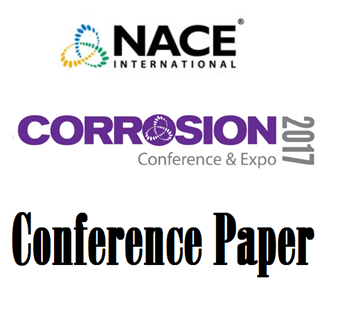Search
Maritime
View as
Sort by
Display
per page
51317--9571-Reflections on 70 Years of Marine Corrosion Research and Testing Inspired by Francis L. LaQue
Product Number:
51317--9571-SG
ISBN:
9571 2017 CP
Publication Date:
2017
$20.00
51317--9576-Inland Wharves - Challenges of Service Life Modeling
Product Number:
51317--9576-SG
ISBN:
9576 2017 CP
Publication Date:
2017
$20.00
51317--9622-Laboratory Test to Evaluate Lean Duplex UNS S32101 and UNS S32304 Flexible Pipe Carcass at Sour Service
Product Number:
51317--9622-SG
ISBN:
9622 2017 CP
Publication Date:
2017
$20.00
51317--9623-Are Drill Pipe Conventional Coatings Suitable for Subsea Early Production Risers?
Product Number:
51317--9623-SG
ISBN:
9623 2017 CP
Publication Date:
2017
$20.00
51317--9629-The Effect of a Cleaning Additive in Conjunction with Waterjetting or Abrasive Blasting for Offshore Coating Maintenance
Product Number:
51317--9629-SG
ISBN:
9629 2017 CP
Publication Date:
2017
$20.00
51317--9642-Ageing Subsea Pipelines External Corrosion Management
Product Number:
51317--9642-SG
ISBN:
9642 2017 CP
Publication Date:
2017
$20.00
51317--9656-Marine Structural Integrity Subject to Mechano-Electrochemical Induced Corrosion
Product Number:
51317--9656-SG
ISBN:
9656 2017 CP
Publication Date:
2017
$20.00
51317--9735-Corrosion Risk Assessment Through Dynamic Environmental Monitoring on Board a Naval Ship
Product Number:
51317--9735-SG
ISBN:
9735 2017 CP
Publication Date:
2017
$20.00
51317--9776-MIC-Resistant HDPE Lining for Seawater Applications
Product Number:
51317--9776-SG
ISBN:
9776 2017 CP
Publication Date:
2017
$20.00
51318-10494- The Water pH and Gas Evolution Risks Associated with the Use of Aluminium and Zinc Anodes for the Internal Cathodic Protection of Offshore Monopiles
Product Number:
51318-10494-SG
Publication Date:
2018
$20.00
51318-10558-Corrosion Protection of Reinforced Concrete Columns and Piles in a Marine Environment
Product Number:
51318-10558-SG
Publication Date:
2018
$20.00
51318-10617-Evaluation of Alloys for Marine Exhaust Scrubbers – Effect of Welding and a Crevice
Product Number:
51318-10617-SG
Publication Date:
2018
$20.00












